EL TOPO. Cult, surreal, magical experience of a movie

Accompanied by him is his son, a naked boy of a few years old.
A depiction on the border of reality and dream, fantasy and hallucination. This extraordinary, colorful, surrealist western of El Topo is simply a unique film. It is an undisputed cult film, a classic of the so-called “midnight movies.” In the lead role, the director himself, Alejandro Jodorowsky, a Chilean-Jewish artist and one of the most original avant-garde creators.
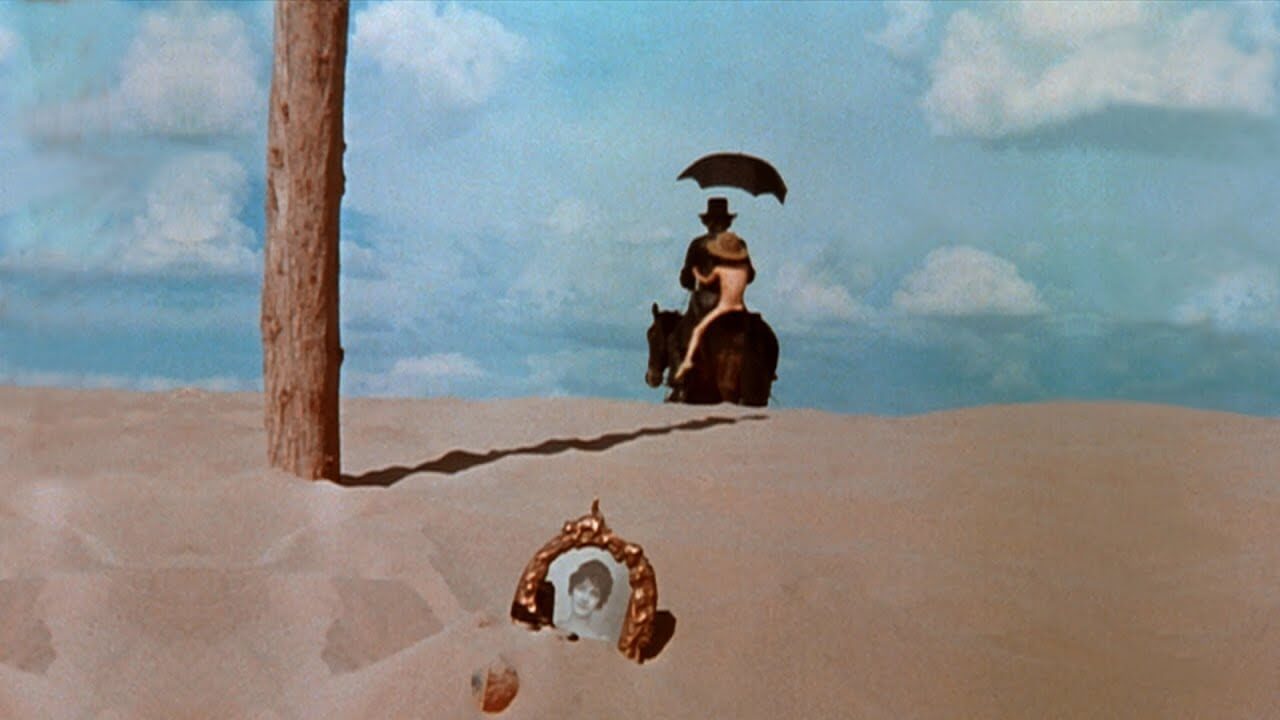
El Topo is, in essence, a very complex film. Rich in symbolism, full of references to both Christian religion and other spiritual-religious systems. There are plenty of hidden meanings, Freudian motifs, and symbols from Jung. Jodorowsky’s film is a blend of avant-garde, western, metaphysics, surrealism, mysticism, and sometimes even grotesque. It is simultaneously a colorful road movie, with adventurous and romantic themes. There is drama and emotion—just like in a classic western. There are also bizarre and irrational phenomena, which, combined with the classical western form, create a new narrative. In other words, Jodorowsky’s El Topo represents an entirely new quality in world cinema.
The film’s action unfolds realistically here and now but is mixed with a metaphysical vision of spiritual journeying. The film features numerous eccentric characters, sadistic bandits, depraved older women, and perversions. In all this, El Topo is the central character.
Plot: a mystical journey
For those who haven’t seen Jodorowsky’s film, the following paragraphs will give you an idea of the atmosphere in which El Topo is bathed.
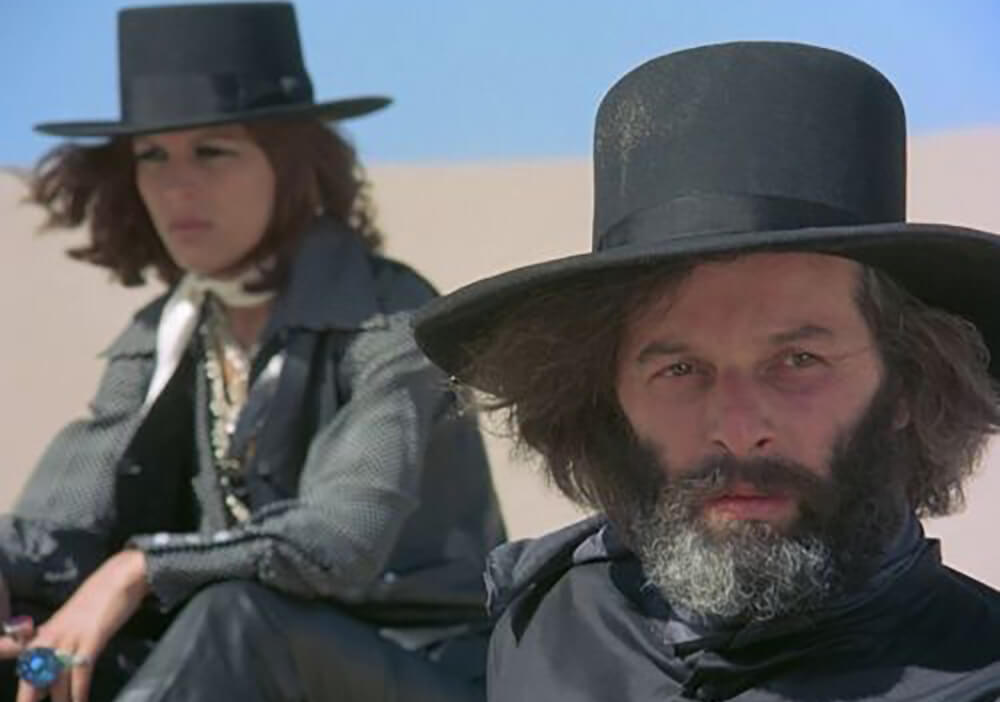
Jodorowsky’s film starts quite unusually. El Topo – a handsome, wise, narcissistic warrior – sets out into the desert with a mission to defeat a cruel gang responsible for a bloody massacre of members of small local communities. He manages to track down the sadists. He catches them in the act of torturing monks. Like a mythical hero, El Topo ruthlessly deals with the bandits. He leaves his son with the monks and triumphantly rides away from the scene of the battle. But not alone. He takes with him a woman who becomes his confidante and at the same time a goddess. El Topo even invents a name for her. He calls her Mara.
It is unclear what role this woman will play in his life. She looks like a hippie. At first obedient, she later becomes a spiritual guru. Soon, she begins to dominate in the emotional relationship with El Topo. The strong psychological construct of the main character begins to crumble under the sensual pressure of Mara. El Topo becomes increasingly lost. Under the influence of Mara, he murders four spiritual masters in the desert. He slowly realizes that he doesn’t fully know who he is, and the precise aim of his holy intentions has been destroyed.
El Topo begins to doubt his mission, feeling like a victim, trapped spiritually. The film’s action moves into the realm of unreal visions, unfolding on a psychological-spiritual plane. The film’s reality becomes a retrospection or projection of something unconscious.

Suddenly, in the lives of Mara and El Topo, appears a beautiful, demonic woman who quickly mentally overpowers Mara. A strange emotional-erotic bond forms between the women. El Topo, torn internally, dies spiritually. Blood appears on his footsteps, reminiscent of Christ’s wounds. Marked by suffering, he falls to the ground. Meanwhile, the women begin to kiss and ride away on a horse, while nearby hangs a crucified calf. These connections are strange, excessively eccentric, and enigmatic! And this is how the first part of the film ends.
After the symbolic death of El Topo, he wakes up as an internally purified meditating “sage.” It turns out he is in a cave inhabited by mutilated, crippled, and physically deformed beings. El Topo is cared for by a dwarf who nurtures and admires him. The cave is a prison and ghetto for the poor creatures.
Next, there is an attempt at redemption, collective murders, ritual self-immolations, and classic sunsets. If you’ve read the above summary (without fear, no major spoilers), you must admit that it is an incredible, psychedelic, surreal story.
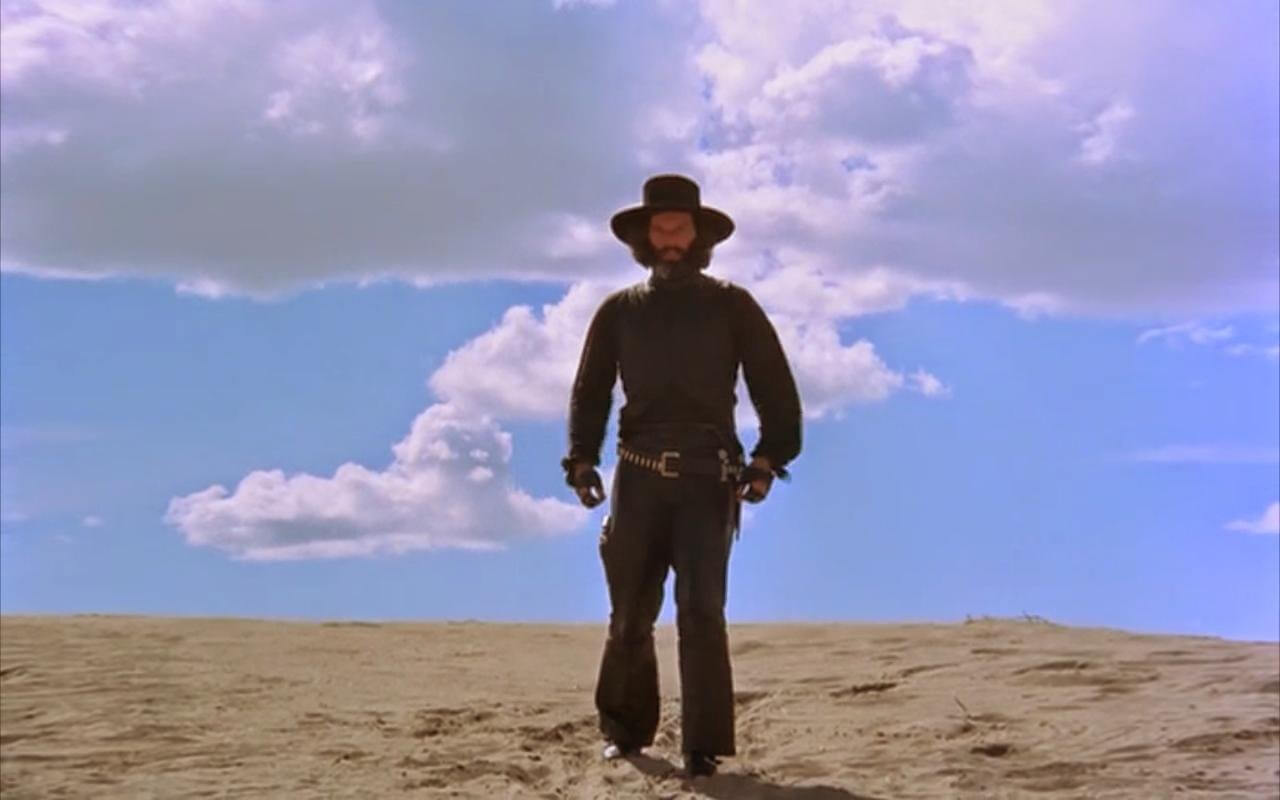
Who is El Topo really?
Jodorowsky created an extraordinary character in his amazing film. The titular El Topo is a man searching for enlightenment in the desert—a lonely and lost silent man seeking to explore the mystery of existence. Through mystical-existential plunges, he becomes increasingly aware and internally purified. Is he doing this for glory and vanity, or for redemption and spiritualization? It’s hard to give a clear answer. Martyr, guru, saint, philosopher, master, or just an ordinary man?
In the case of such artistic creations, the question arises as to who the enigmatic hero of the film is—given that it is an unconventional character.
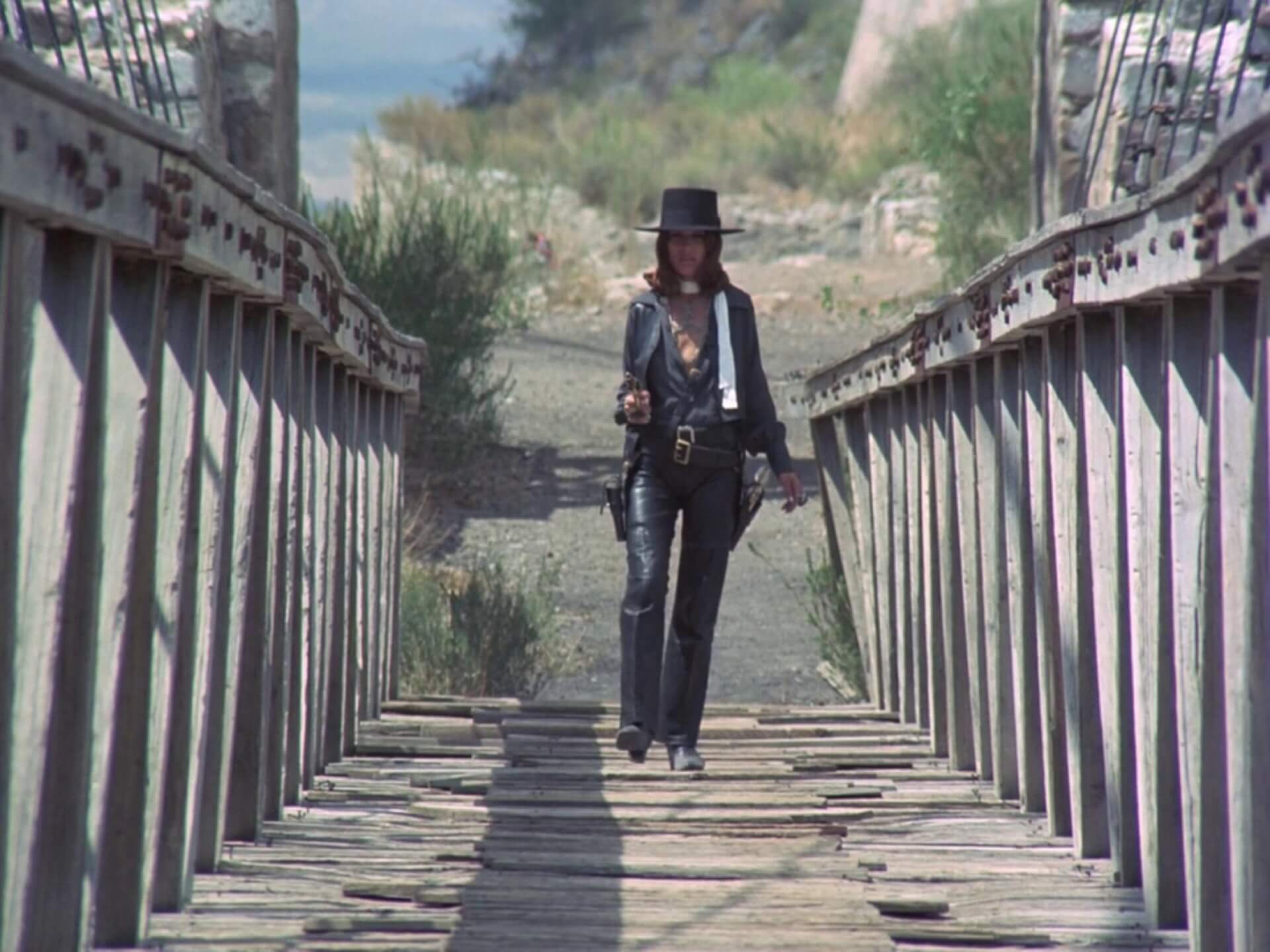
For two hours on the screen, we see a handsome man dressed in a hat and black leather pants. His appearance resembles a hippie, a bit of a rockstar, or some wandering artist, or even a mystical wanderer. At first, he is silent and unreflective in his tasks. He is demonic and mysterious, then becomes open and full of optimism. Almost always self-assured and effective in action. In the second part of the film, he mostly appears as a beggar, enlightened, a joyful fool, ready for sacrifices in the name of a higher truth. A kind of aberration or simply a spiritual mission? In the light of previous considerations, it’s probably both. El Topo is an ambiguous character: a seeker who wants to be enlightened. We don’t know if he succeeds. What matters is that he keeps searching, and El Topo does that. At the root of every spiritual journey lies a desire to oppose what is absurd, evil, and incomprehensible, uncertain and yet undiscovered. El Topo probably knows that. Maybe it’s not the most important thing—whether he achieves enlightenment, it’s important to keep searching!

Did the film’s hero achieve enlightenment?
This is a controversial issue. On the one hand, the divine El Topo, by sacrificing his physical body in a salvific way, freed himself and the world from suffering. He experienced initiation. He became a liberated individual—he reached the truth. On the other hand, he was not fully able to achieve autonomy and the full happiness resulting from illumination. We don’t know if El Topo experienced enlightenment. Even the title of the film is puzzling. El Topo (the mole) is a symbol of an animal—a mole. Blind all his life, he moves in dark tunnels, digging and trying to get out to the surface—to the sun? But he is blind by nature, so he can never see it. Perhaps the director wanted to expose religious absurdities. Perhaps this strong visual-demasking content is an attack on religion? Maybe Jodorowsky, through the dark hippie gunslinger, wanted to show the process of reaching a liberating truth? Each interpretation is equally valid and important here. Each one is worth considering, especially since El Topo is a child of its time, familiar with narcotic trips.
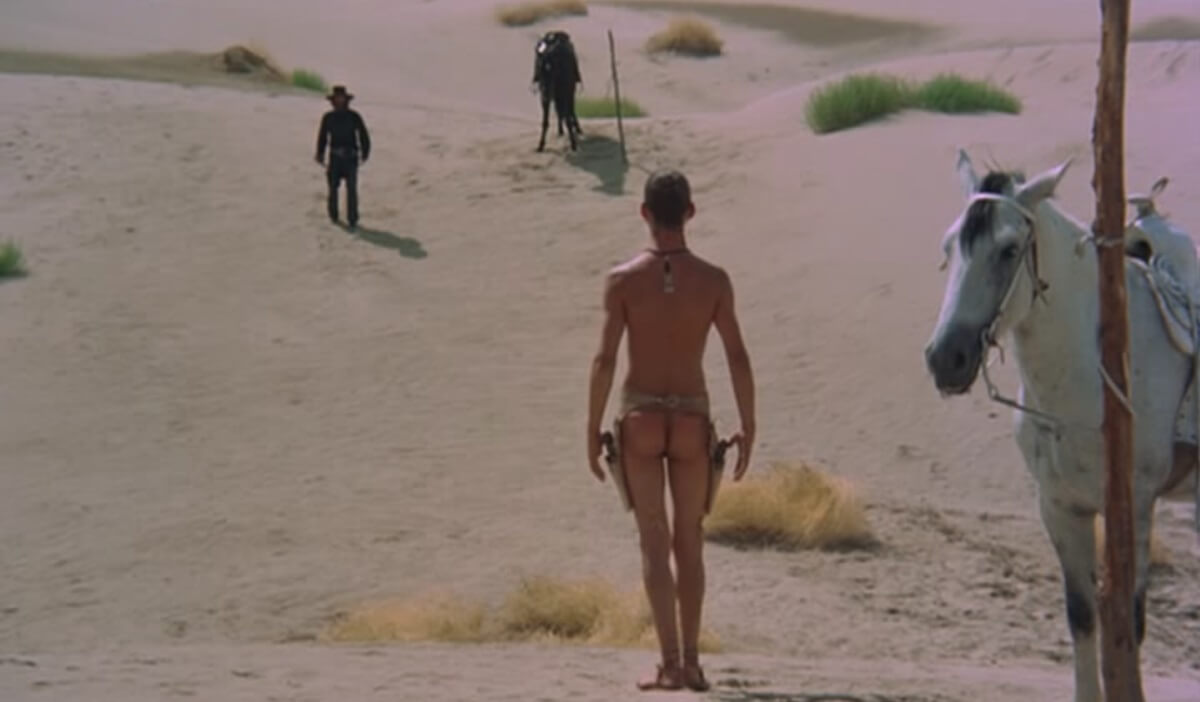
Critics did not give a definitive answer as to whether El Topo found enlightenment. Jodorowsky’s work was differently evaluated by reviewers in terms of content. Much could be said about this film, and its complicated image could be judged in various ways. Amidst all these complex analyses, one thing is certain—Jodorowsky masterfully portrayed the role of El Topo in his film. He created a cult, magical, and incredibly charismatic character, an icon of style and to some extent a cultural model. El Topo is one of the most original acting creations in art cinema. The divine, mysterious El Topo is simply an extraordinary hero!
Words by Sylvia K.

